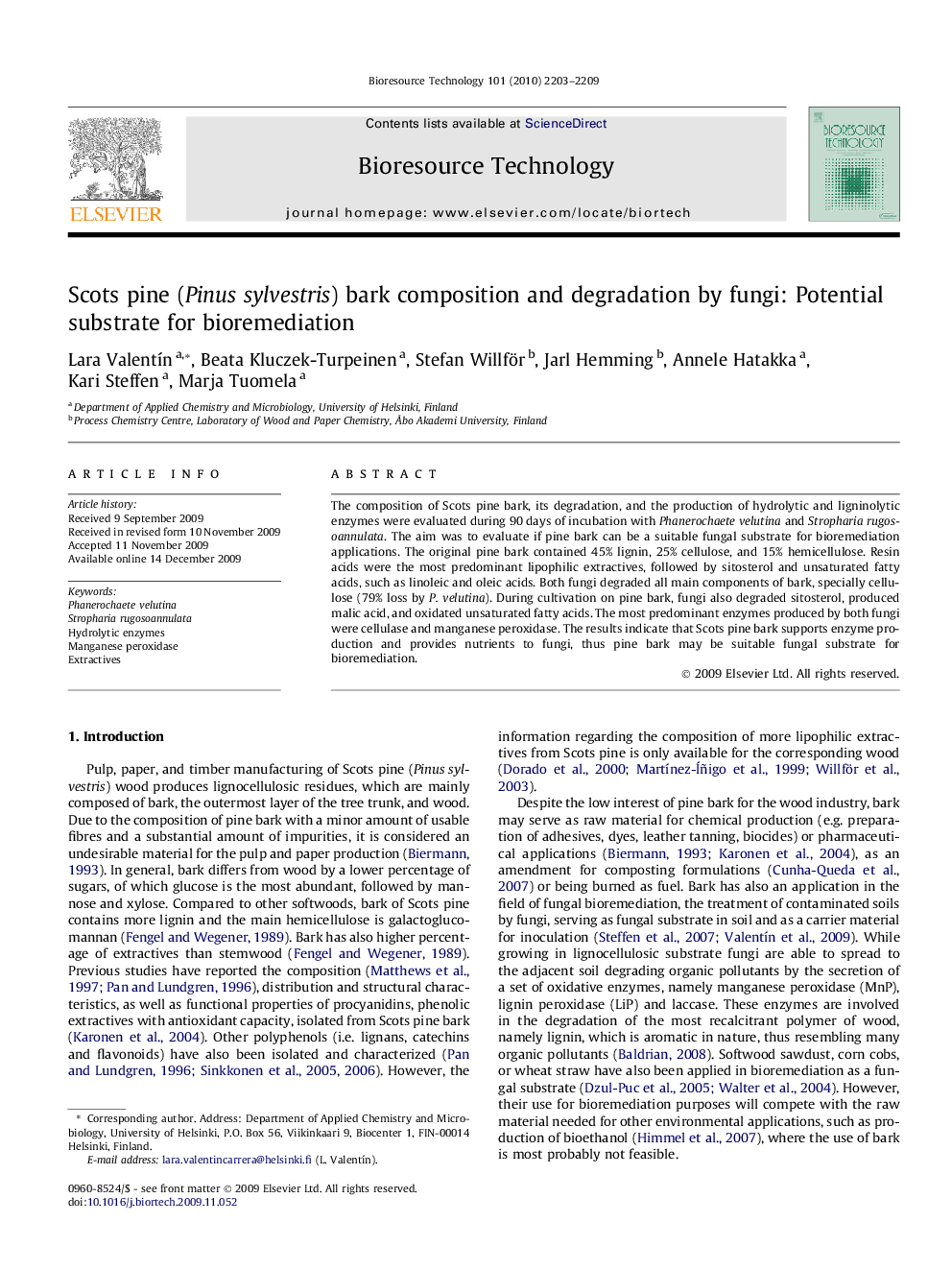| کد مقاله | کد نشریه | سال انتشار | مقاله انگلیسی | نسخه تمام متن |
|---|---|---|---|---|
| 683846 | 889008 | 2010 | 7 صفحه PDF | دانلود رایگان |

The composition of Scots pine bark, its degradation, and the production of hydrolytic and ligninolytic enzymes were evaluated during 90 days of incubation with Phanerochaete velutina and Stropharia rugosoannulata. The aim was to evaluate if pine bark can be a suitable fungal substrate for bioremediation applications. The original pine bark contained 45% lignin, 25% cellulose, and 15% hemicellulose. Resin acids were the most predominant lipophilic extractives, followed by sitosterol and unsaturated fatty acids, such as linoleic and oleic acids. Both fungi degraded all main components of bark, specially cellulose (79% loss by P. velutina). During cultivation on pine bark, fungi also degraded sitosterol, produced malic acid, and oxidated unsaturated fatty acids. The most predominant enzymes produced by both fungi were cellulase and manganese peroxidase. The results indicate that Scots pine bark supports enzyme production and provides nutrients to fungi, thus pine bark may be suitable fungal substrate for bioremediation.
Journal: Bioresource Technology - Volume 101, Issue 7, April 2010, Pages 2203–2209